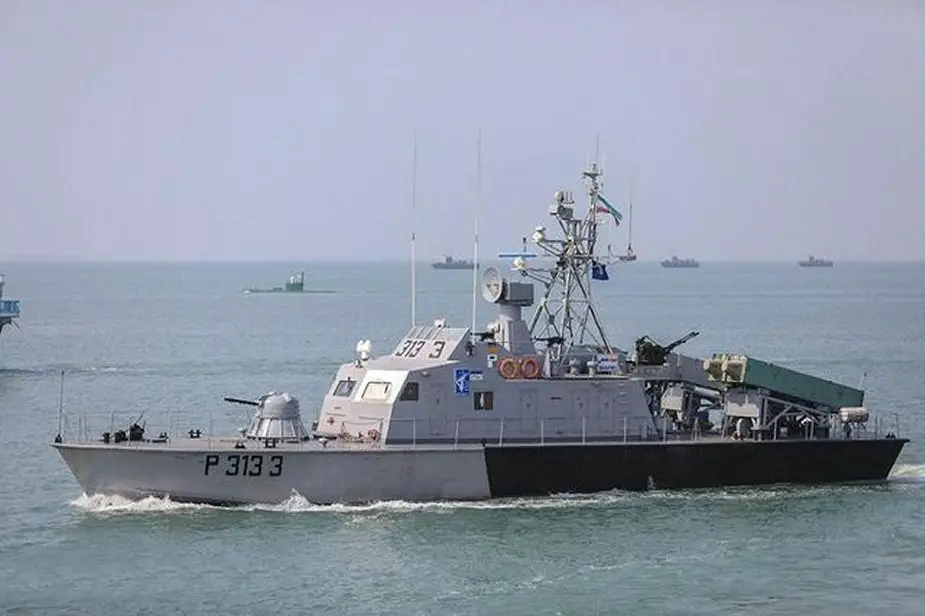Breaking news
IRGC Navy Vessels Equipped with New Anti-Ship Cruise Missiles.
The Islamic Revolution Guards Corps (IRGC)'s Navy has mounted anti-ship cruise missiles with a range of 300km on its Tondar vessels, images of the Sunday military parades in the Persian Gulf showed.
 The IRGC’s Tondar (Houdong) missile boat (Picture source: IRNA)
The IRGC’s Tondar (Houdong) missile boat (Picture source: IRNA)
Images taken of the Sunday nationwide parades showed that Qadir cruise missiles with a range of 300km have replaced Nour missiles on the vessel. Qadir is a new generation of cruise missiles capable of destroying marine targets with high precision and power. It can be fired from coasts and vessels both.
The Iranian naval forces for the first time in January 2018 tested the home-made long-range Qadir cruise missile during the wargames underway in the Sea of Oman. The missile could destroy simulated enemy targets deep in the sea during the military exercises codenamed Mohammad Rasoulollah (PBUH) which was held in the country's Southern and Southeastern waters, South Makran region and the Northern coastline of the Sea of Oman.
The Iranian Armed Forces displayed and unveiled for the first time various types of missiles, equipment and air defense systems such as the home-made version of the sophisticated Russian S-300 missile defense system, dubbed as Bavar (Belief) 373 with the capability to confront threats in high-altitude, distant areas, ballistic missiles, cruise missiles and drones.
The newly-developed home-made mine-resistant ambush-protected (MRAP) vehicle, a new artillery system named 'Ha'el (Barrier)' equipped with a passive radar system and can intercept the targets in a stealth mode. The artillery system is mobile and has been designed to confront low-altitude targets, including cruise missiles, aggressor drones or little flying objects.
And the home-made state-of-the-art missile defence system named 'Khordad 15' which is equipped with a passive phased array radar system for detecting fighter jets, stealth targets and cruise missiles. The system can trace targets, including fighter jets and enemy drones, 150km away and intercept them at a range of 120km. It can also trace stealth targets in areas 85km in distance, and destroy them at a distance of 45km. The missile defence system can trace, engage, and destroy 6 targets simultaneously, enjoys high mobility and can be prepared for operation in less than 5 minutes. Meantime, the latest version of the warhead used in the long-range ballistic missile of Khordad 15 defence system was displayed in the parades. The missile can carry several warheads up to 1,800kg and has a range of 2,000km.
The ceremony held in Tehran was participated by senior military and government officials, including Chief of Staff of the Iranian Armed Forces Major General Mohammad Hossein Baqeri and President Hassan Rouhani, as well as foreign diplomats, military attaches and reporters, different units of the Islamic Republic Army, Islamic Revolution Guards Corps (IRGC), Law Enforcement Police and Basij (volunteer) forces. The parades mark the start of the Sacred Defense Week, commemorating Iranians' sacrifices during the 8 years of the Iraqi imposed war on Iran in 1980s.
A similar ceremony was held by the Iranian Army and the IRGC. They conducted joint aerial parades in the Southern province of Hormozgan and the territorial waters in the Persian Gulf on Sunday. The joint parades were staged with participation of the Air Force's F-4 and Mirage fighter jets and helicopters, the IRGC's Sukhoi-22 fighters, the Navy's Tucano, Yak 12 fighter jets and S.H. and 212 helicopters as well as the Navy's various surface and subsurface units.



















